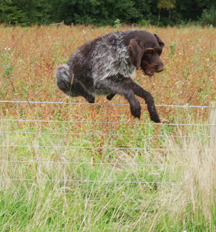Understanding Hip Dysplasia
Hip Dysplasia is caused by the hip joint being abnormally loose. This looseness causes the hip joint to wear abnormally, and erosion of the hip joints results. This erosion in turn causes pain and arthritis (now called degenerative joint disease) to develop.
Just what makes a dog to be predisposed to develop this disease is not 100% clear. Research has shown that there is a genetic link involving recessive genes, but to what degree this will cause an animal to go on to develop hip dysplasia is not yet fully understood. What research has shown is that if a parent has HD their offspring is at a higher risk of developing the disease.
It is not always easy to say a dog is or is not suffering from HD as the amount of pain shown by an animal doesn’t always correspond with the degree of changes in the hip joints.
The subject of HD is, in itself quite controversial. Some feel that genetics alone are the only factor involved, whereas others feel that genetics do play a part, but that environmental factors do also. This could all boil down to the way genetics work. With genetic diseases you will have carrier animals who, although don’t display visual symptoms will pass the predisposition on to offspring. If there are no carriers in the dog’s lineage it will not develop the disease. This makes it important to look at the dogs’ pedigree and hip scores of close relatives before deciding to breed. The dog itself may have a good score, but if it is a carrier animal it may still pass the HD predisposition on to offspring. If both dogs have good scores but are both carriers they could produce dogs that go on to develop HD, and some carrier animals. In the same way, two affected dogs may produce offspring that present no visual symptoms but will be carriers of the disease.

As well as genetic, environmental factors also come into play. Excessive calorie intake resulting in too rapid a growth rate or weight gain has been shown to be a contributing factor, as has excessive exercise at a young age. If the dog is genetically predisposed to HD, subjected to excessive exercise and calorie intake the possibility of them developing HD would be higher.